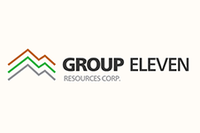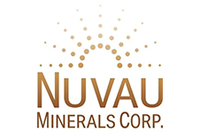Here’s a look at the 10 countries that produced the most zinc in 2012, based on numbers from the US Geological Survey.
Zinc is an important metal that an increasing number of investors and analysts believe will rally in the next few years. It has many applications, and can be used in galvanizing, batteries and as an anti-corrosion agent. Zinc is also important in some renewable energy technologies.
In 2012, global zinc mine production rose to 13 million metric tons (MT) as refined metal production fell to 12.9 million MT, according to the US Geological Survey (USGS). Consumption of the metal across the world sank to 12.7 million MT, causing a surplus of 153,000 MT for the year.
Here’s a look at the 10 countries that produced the most zinc in 2012, based on numbers from the USGS.
1. China
Mine production: 4.6 million MT
China, the world’s largest zinc producer, put out 4.6 million MT of zinc last year, accounting for one-third of global production.
Output from the Asian nation was recently described by Gayle Berry, an analyst at Barclays, as “the big wild card” for the zinc market, as per the Financial Times. “Chinese mine production has continued to outperform expectations in the last few years,” she commented, also stating, “[w]hen we see this level out, it will be constructive for zinc prices.”
2. Australia
Mine production: 1.49 million MT
Since 1883, zinc has been a crucial part of the Australian economy; last year, the country produced 1.49 million MT of the metal.
The main zinc mines in Australia are McArthur River in the Northern Territory and Carrington in Queensland. The famous Century mine, the country’s largest zinc mine, will close in 2016 due to resource depletion.
3. Peru
Mine production: 1.27 million MT
Zinc mining has an even longer history in Peru than it does in Australia, and has been mined there since pre-Hispanic times and throughout the Spanish Colonial era, according to IEQSA. Modern zinc refining has been taking place since 1922.
In 2012, Peru produced 1.27 million MT of zinc; several new zinc mines have recently been opened in the country.
4. United States
Mine production: 748,000 MT
The United States produced 748,000 MT of zinc in 2012. The country is the leading consumer of zinc, using about one-seventh of the world’s total output, as per the USGS. As a result, it imports the refined form of the metal in addition to mining for it.
The US is home to the Alaska-based Red Dog mine, the world’s largest zinc mine.
5. India
Mine production: 690,000 MT
India, which produced 690,000 MT of zinc last year, is where zinc was first recognized as a new metal, the International Zinc Association states; at the time, it was only one of eight metals known to humanity. The country is still a star zinc producer, and mines in the country are doing quite well. Vedanta Resources (LSE:VED) reported a 16-percent rise in zinc production in the second quarter of 2013, for example.
6. Canada
Mine production: 640,000 MT
Zinc production in Canada started in 1916, according to the Canadian Encyclopedia, and zinc mines are currently operating in British Columbia, Saskatchewan, Manitoba, Ontario, Quebec, the Northwest Territories, Yukon and Nunavut. All primary zinc production in the country is done via the electrolytic process, “which yields a product that is more than 99% pure.”
In 2012, Canada produced 640,000 MT of zinc valued at $1.18 billion.
7. Mexico
Mine production: 630,000 MT
Mexico’s top zinc mines include the Proano, Campo Morado, La Ciénega and Penasquito mines, all of which contributed to the country’s 630,000 MT of zinc output last year. Many of Mexico’s zinc mines also produce a significant quantity of lead.
Grupo Mexico (OTCMKTS:GMBXF) is reportedly considering a zinc refinery in the country’s northern region, as per Reuters. The company believes it is essential to have a way to process all of its concentrate.
8. Bolivia
Mine production: 430,000 MT
Bolivia produced 430,000 MT of zinc in 2012. The leading producer of zinc in Bolivia is Minera San Cristobal, a subsidiary of Japan’s Sumitomo (TSE:8053). The country’s second-biggest producer is Sinchi Wayra, whose parent company is Glencore International, now Glencore Xstrata (LSE:GLEN).
9. Kazakhstan
Mine production: 420,000 MT
The value of Kazakhstan’s mining industry is expected to reach $29.5 billion by 2017, a report by Business Monitor International states. In terms of zinc, the country has the sixth-largest reserves in the world; its eastern region has the most abundant deposits.
10. Ireland
Mine production: 345,000 MT
Ireland, Europe’s largest producer of zinc, put out 345,000 MT of zinc in 2012. The country has a significant base metal deposit at Navan, and is also home to the Lisheen and Galmoy underground operations. The Tara mine at Navan is the sixth-largest zinc mine in the world, while Lisheen is the 12th-largest zinc mine.
Related reading:

